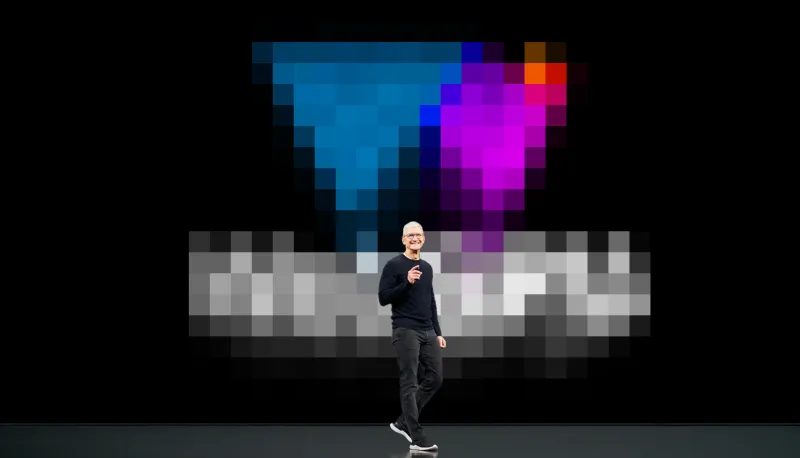How WebGPU Will Transform Web Applications in the Coming Years
Leveraging WebGPU for Enhanced Performance and Advanced Capabilities in Next-Generation Cloud-Based Applications.
Last updated: January 16, 2024Introduction
The digital landscape is continuously evolving, with web-based applications leading this transformation.
These browser-based tools have become integral to our daily digital interactions, offering convenience and functionality previously only available in desktop applications.
This blog post will explore how WebGPU is set to revolutionize these applications, bringing them to unprecedented levels of performance and capabilities.

What Is a Web Application?
Web applications, also known as cloud-based applications, are software that runs on web browsers, such as Google Chrome, Windows Edge or Safari, eliminating the need for traditional installation.
Their growth has been significant, driven by popular applications such as Figma, Spline, Photoshop Web, Google Docs, Slack, Webflow, and Discord.
These tools have redefined various domains, including design, collaboration, productivity, and communication, setting new standards in user experience and accessibility.
In addition to their increasing popularity, these applications are attracting significant attention and investment in the tech industry.
For instance, Spline recently raised $15M in Seed Funding, highlighting the growing investor interest in innovative web application solutions.
Moreover, the high-profile, though ultimately unsuccessful, attempt by Adobe to acquire Figma for approximately $20 billion further underscores the substantial value and potential that these web-based platforms represent in the modern digital landscape.

Cloud-Based Apps VS Traditional Apps
Web apps offer numerous advantages over traditional desktop applications. They are easily shareable through URLs and require no installation, making them more accessible and user-friendly.
This ease of access and simplicity not only enhances the overall user experience but also significantly reduces user friction, leading to higher conversion rates. By eliminating barriers such as downloads or installations, web apps streamline the user's journey, increasing the likelihood of engagement and adoption of these applications.
Furthermore, these applications benefit from automatic updates, ensuring users always have access to the latest features and improvements without manual downloads or installations.
Another key benefit of these applications is their ability to bypass the royalties and fees associated with mobile app stores, allowing developers to retain more revenue and maintain a closer relationship with their user base.
Limitations of Current GPU-Intensive Applications
Despite these advantages, web-based applications face performance limitations, especially in tasks requiring advanced visuals or heavy computation.
This is where WebGL the current technology for web app struggle to keep up, hindering the potential of these applications in complex graphical tasks.
WebGL has been the cornerstone for GPU-accelerated graphics in browsers. However, as an older technology, it falls short in optimizing modern GPU capabilities, limiting the potential of web and cloud-based applications in handling complex tasks.
Introduction to WebGPU and Its Benefits
Enhanced Performance and Efficiency
WebGPU represents a significant advancement in graphics and computational performance for web-based and cloud-based applications.
Designed to harness modern GPU hardware's full capabilities, WebGPU offers dramatic improvements in efficiency and performance.
Applications using WebGPU can manage more complex graphics and computations, resulting in smoother and more visually impressive experiences. This optimization reduces latency and improves responsiveness, providing a seamless user experience.
Cost-Effective Server Load Reduction
One of the overlooked yet significant advantages of WebGPU is its impact on reducing server load and related costs for application companies.
By enabling more complex computations to be processed directly on the user's device, WebGPU shifts the computational burden away from centralized servers. This not only results in faster processing times and reduced latency for end-users but also substantially lowers the need for heavy server-side computation.
Consequently, companies can save on the costs associated with maintaining large-scale server infrastructure. This server load reduction is particularly beneficial for startups and smaller companies that may have limited resources for server capacity.
With WebGPU, these organizations can offer advanced, resource-intensive applications without incurring the high costs typically associated with server-side processing, leveling the playing field in the digital ecosystem.
Advanced AI and Machine Learning Support
WebGPU robustly supports AI and machine learning operations, crucial for the growing integration of AI in web applications. It enables effective execution of machine learning models directly in the browser, enhancing privacy and security by processing data locally on the user's device.
This capability allows developers to implement complex AI functionalities more easily, leading to innovative AI uses in web applications.
Code Once, Deploy Everywhere and Future-Proofing
The 'code once, deploy everywhere' philosophy of WebGPU significantly reduces development time and resources. It allows code to run efficiently across various platforms and devices.
WebGPU is the perfect solution to export your web application into native without losing any performance.
Challenges and Considerations
Adopting WebGPU presents challenges, including a steep learning curve due to its novelty and the depth of understanding required for GPU operations and optimizations.
At Utsubo, we have extensive experience in WebGL and are uniquely positioned to navigate WebGPU's complexities. We also emphasize the importance of backward compatibility, as not all users will have a browser that support WebGPU.
Our team is a key contributor to integrating WebGPU into Three.js, a library crucial for developing advanced web applications used by thousands of companies globally.
We are focused on ensuring that Three.js effectively supports WebGPU, facilitating a seamless transition from WebGL and enabling enhanced performance and capabilities for a wide range of web and cloud-based applications.

Disrupting the Traditional Software Application Space with WebGPU.
WebGPU opens new possibilities in web-based application development, allowing for sophisticated applications like advanced 3D modeling. It also enables the use of AI models and client-side computations, broadening what web and cloud-based applications can achieve.
With WebGPU, a range of GPU-intensive software that was once limited to desktop applications becomes feasible for web implementation.
One exciting area is voice editing software, where WebGPU can handle real-time audio processing and effects, bringing studio-level audio editing capabilities to the web. This opens up opportunities for musicians, podcasters, and audio professionals to access powerful tools directly from their browsers without needing specialized desktop software.
Similarly, real-time filters and effects on camera feeds, akin to those popularized by Snapchat, can be significantly enhanced with WebGPU. This technology enables more sophisticated and computationally heavy filters, transforming how users interact with camera-based applications for social media, virtual meetings, and live streaming.
In the realm of video editing, WebGPU facilitates the development of web-based video editing software that can handle high-resolution footage and complex editing tasks. This could democratize video editing by making advanced tools more accessible and reducing the need for high-end desktop hardware.
Architecture software is another domain where WebGPU can make a substantial impact. Architects and designers can leverage web-based applications for 3D modeling and rendering, allowing them to work collaboratively on projects in real-time from any location.
WebGPU also holds immense promise for the field of Scientific Simulations and Research. With its advanced GPU processing capabilities, researchers and scientists can utilize web-based applications for complex simulations that were traditionally confined to specialized software.
This includes areas like computational fluid dynamics, molecular modeling, and environmental simulations. By facilitating these simulations directly in a web browser, WebGPU enables more collaborative and accessible research, allowing scientists to share and work on simulations from anywhere in the world.
For big data applications, WebGPU can handle large-scale data processing and complex visualizations, such as interactive dashboards, real-time data analytics, and complex graphing solutions. This capability significantly enhances the ability of businesses to analyze vast amounts of data, providing insights more quickly and effectively. Those data become more accessible and interactive, facilitating better decision-making and understanding of trends and patterns.

For Virtual and Augmented Reality (VR/AR), WebGPU is a game-changer. It empowers developers to create more immersive and interactive VR and AR experiences directly in web browsers, without the need for external plugins or high-end VR hardware.
This could transform various sectors, including education, where students can engage in interactive learning environments, and the real estate market, where customers can take virtual tours of properties.
Moreover, it can enhance online retail experiences through virtual try-ons and product demonstrations, providing customers with a more engaging shopping experience.
Furthermore, WebGPU's capabilities extend to game engine development for web-based gaming. Game developers can now create more graphically intensive and immersive games that run smoothly in web browsers, rivaling the experiences traditionally available only on dedicated gaming consoles or high-performance PCs.
These diverse applications of WebGPU not only highlight its versatility and power but also mark a significant shift in the landscape of software development.
Conclusion
The emergence of WebGPU marks a pivotal moment for companies involved in web applications. Embracing this technology is crucial to staying competitive in the rapidly evolving digital landscape.
For organizations looking to implement WebGPU, partnering with experienced teams like ours at Utsubo is a strategic move. Our extensive experience in WebGL and our ongoing efforts in WebGPU development position us well to help businesses transition to this promising new technology.
With WebGPU, the future of web and cloud-based applications is not only bright but also brimming with possibilities that will redefine how we interact with digital content and applications on the web.
Contact us now to build your next web application with WebGPU.






